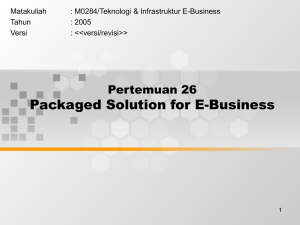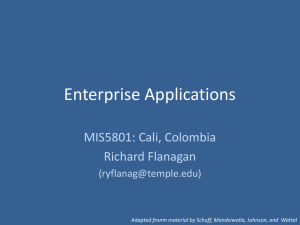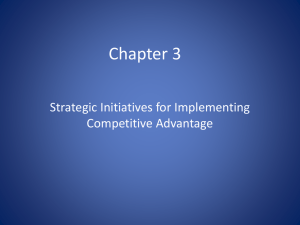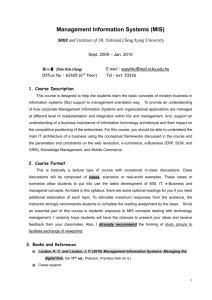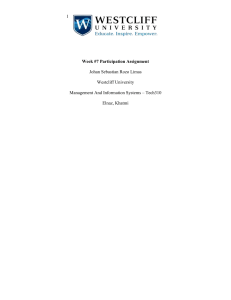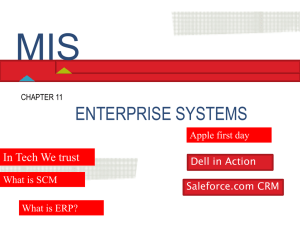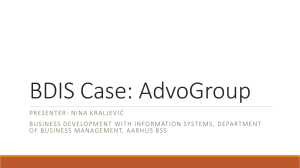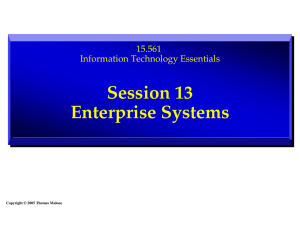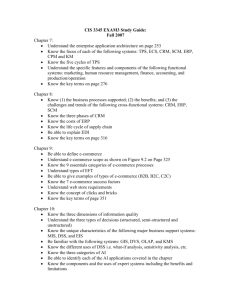Chapter 1 Business Driven Technology
advertisement
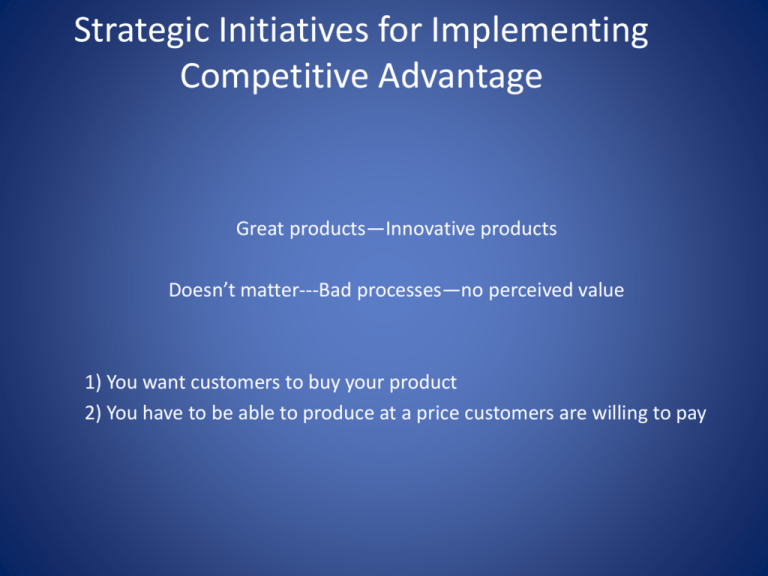
Strategic Initiatives for Implementing Competitive Advantage Great products—Innovative products Doesn’t matter---Bad processes—no perceived value 1) You want customers to buy your product 2) You have to be able to produce at a price customers are willing to pay Using IT to gain a competitive advantage • Businesses use IT to give themselves a competitive advantage – Customers value their product or service more than the competition’s product or service. • How can we do things better and more efficiently? Is there a better way of doing things? – Businesses have to understand the process by which they do things • Find bottlenecks • Remove redundant tasks • Recognize smooth running processes Business Processes Drive IT choices • Business strategies and goals drive processes – Figure out business needs and goals first—then select IT to get the job done • Managers often find themselves in the difficult position of changing a business process because the system can’t support the ideal solution. • Typically fail when IT selected first • When considering change, alternative business processes should be: – 1) Effective: deliver the intended results – 2) Efficient: consume the least amount of resources for the intended value. – 3) Adaptable/flexible and support change • Technology and market forces constantly change Changes to Improve Business Processes • Automation: Operational process – Manual tasks become computerized • Streamlining: Managerial process – Simplify steps – Eliminate unnecessary steps and/or redundancies – Eliminate bottlenecks • Reengineer business processes: strategic process change – Find a completely different approach – Flat world has more competition than ever before as there are more companies and customers in the global marketplace. – Focus on core processes that are critical to performance rather than on margin processes that have little impact Finding Opportunity Using Business Process Improvement (Reengineering) • A company can improve the way it travels the road by moving from foot to horse and then horse to car – Follow the same path as before, but just do it faster • Business Process Improvement looks at taking a different path, such as an airplane which ignores the road completely Businesses can also improve their competitiveness by changing what they do • Focusing on business intelligence and data analytics – Putting together all of the pieces so that you can better understand your business, the environment that it operates in, and the factors that influence it. – Set of methodologies, processes, architectures and technologies that transform raw data into meaningful information (business intelligence) to enable more effective decision making and better insights into the business (strategical, tactical and operational). – Goal: to make better business decisions • Moving to the “cloud” may also help improve an organization’s ability to be competitive. • Major business initiatives where improving the process can result in a competitive advantage – Managing the flows of information between all of the parties directly and indirectly involved in the procurement of a product or raw material. • Supply Chain Management (SCM) – Managing all aspects of a customer’s relationship with an organization with the goal of increasing customer loyalty and retention and an organization's profitability • Customer Relationship Management (CRM) – While SCM and CRM sound like IT systems, they are actually business processes and business goals that are enhanced by technology Enterprise Resource Planning • Enterprise resource planning (ERP) – integrates all departments and functions throughout an organization into a single IT system so that employees can make decisions by viewing enterprise wide information on all business operations (consistent enterprise wide information) • Keyword in ERP is “enterprise” – SCM systems focus specifically on suppliers – CRM systems focus specifically on customers – ERP systems focus on integrating all processes, departments and operations for the entire enterprise We don’t need this ERP stuff. We already have enterprise wide software that we are all using. It is called a SPREADSHEET. S a l e s A c c t g Enterprise Resource Planning • ERP systems collect data from across an organization and correlates the data generating an enterprise wide view that is consistent and real-time. • Common database • Complete Data entry required • Real time • Consistent • One true picture In Summary • Information Technology can be an important enabler of business success and innovation. • Information Technology is most useful when it leverages the talents of people. • In order for this to happen, you must have an enterprise wide view of the entire business operation.
